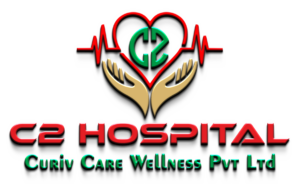The summer sun can be enjoyable but hazardous if we aren’t careful. Heat stroke is a grave concern during the hotter months, especially if you’re unaware of how to protect yourself. By taking practical steps, you can stay safe, healthy, and fully enjoy the sunny weather. This guide offers you essential information to prevent heat stroke, a heat-related illness that demands attention and action for all.
Understanding Heat Stroke and Its Risks
Heat stroke is a serious condition where your body gets too hot. It happens when your body’s cooling system can no longer keep up with the heat. This occurs during long exposure to hot weather and often if you’re not drinking enough water. The condition can cause harm to your organs, making it essential to get quick help.
People often mix up heat stroke and sun stroke, though they are different. Both involve an increase in body temperature and can cause confusion or even unconsciousness. Heat stroke happens when the body overheats in any hot environment, not just under direct sunlight. On the other hand, sun stroke results from overheating due to direct sun exposure specifically. Stay alert to these risks even if you’re not directly in the sun.
Choose the Right Clothing to Stay Cool and Protected
Wearing the right clothes helps you beat that summer heat. Light-colored fabrics like cotton and linen are the best choices for hot days. They not only keep you cooler but also help in reducing your body’s heat retention. These materials play a huge role in reflecting the sun’s rays better than darker shades, minimizing the risk of a heat stroke.
Adding a few accessories does wonders in shielding against heat illnesses. Wearing a hat offers amazing protection for your head and neck from harmful sun rays, while sunglasses can help ease eye discomfort. Carrying an umbrella offers portable shade that shields you from the sun’s harsh effect. These simple additions can help to prevent both heat stroke and sun stroke.
Hydrate Wisely: The Key to Preventing Heat Stroke
Hydration plays a vital role in preventing heat stroke effectively. When the sun is blazing hot, your body quickly loses fluids through sweat. If you don’t drink enough water, dehydration can sneak up on you. Keeping hydrated ensures your body stays cool, reducing the risk of heat stroke.
Choosing the right drinks and foods helps your body stay hydrated well. Water-rich fruits like watermelon and cucumbers are great for hydration levels. Coconut water not only quench thirst but also replenish lost electrolytes. These options can help prevent exhaustion from the heat on scorching summer days.
Understanding and Limiting Alcohol Consumption
Reaching for a cold beer might seem perfect on hot days. Drinking alcohol can make the heat feel worse for anyone outside. It sucks the water out of your body and can cloud your good decision-making skills. When it’s hot and you add alcohol, you raise your risk of heat illnesses like sun stroke. Alcohol can mess with how your body cools itself in the heat.
Instead of alcohol, try some refreshing, non-alcoholic drinks to cool off. A lemonade with fresh mint tastes really great when it’s warm out. You might enjoy herbal iced tea or a minty lassi, which are both very hydrating. Avoiding alcohol in strong heat keeps your body safe from headaches and heat exhaustion.
Eat Light: Meals for Staying Cool and Refreshed
Certain foods can help keep you cooler in hot weather. Leafy greens, cucumbers, and cantaloupe are filled with water from nature. Avoid eating heavy meals that add more heat inside your body. By picking lighter meals, you promote both hydration and energy fit for hot days.
Including fresh produce in your daily meals is great for tolerance of heat. Fruits like pineapples, mangoes, and oranges offer hydration along with vitamins you need. Adding colorful veggies to meals helps keep you cool without overheating. These foods provide the nutrients needed to avoid getting too dry.
Optimize Your Outdoor Routine for Cooler Times
To minimize heat exposure, plan outdoor activities for cooler times like early mornings or evenings. Doing outdoor tasks at midday means you face the strongest sun. This can quickly lead to heat exhaustion. Adjusting your schedule helps avoid the sun’s peak hours and reduces risk of heat-related issues.
Awareness of heat exhaustion signs is vital. Fatigue, heavy sweating, and dizziness indicate your body struggles with heat. Quick response to these symptoms helps prevent progression to heat stroke. It’s essential to rest and hydrate immediately if you notice these signs during hot conditions.
In India, many people adopt practices like avoiding exertion during peak sun hours. Midday siestas or quiet afternoons indoors are common. This cultural adaptation showcases the significance of staying alert for signs of sunstroke, especially when outdoor exposure becomes unavoidable during hotter months.
Create a Cool Indoor Environment
Keeping your indoor area cool is key during hot seasons. Make sure air flows well with fans and air conditioning systems. If the rooms are set too cold, you might feel unwell. Try to keep a gentle balance for comfortable cooling indoors.
A quick cool-down can be achieved using damp towels on your skin. Taking a cool shower can also bring instant relief from the heat. These easy tricks help you stay comfy without using too much electricity.
Recognizing Heat Stroke Symptoms and Immediate Actions
Heat stroke can happen when the body overheats too quickly. This condition is a medical emergency that requires prompt attention and care. It’s different from sun stroke, which happens due to long exposure to the sun.
Key Symptoms of Heat Stroke:
- A high body temperature over 104°F often indicates heat stroke. If someone is unusually hot and sweaty, this could be a warning.
- Confusion or altered mental state could show the brain is affected. Look out for someone who seems disoriented or unsure about their surroundings.
- Nausea and vomiting might suggest issues with body temperature regulation. This can happen when the body is under too much heat stress.
- Quickened breathing or heart rate is another alarm bell. It’s a sign that the body is struggling to cope.
If someone shows signs of heat stroke, quick action is vital:
- Move them to a cooler area immediately, away from direct heat and remove extra clothes.
- If possible, gently cool them with dampened cloths or sponges. Use cold packs if available on wrists and neck.
- Offer cool water to drink if they can swallow comfortably — avoid caffeine or booze.
- If they don’t feel better soon, seek emergency help right away.
For milder heat stroke symptoms, at-home remedies can be effective:
- Resting in a cool room helps the body cool down gradually and safely.
- Gently cooling the skin with a wet towel helps reduce body temperature efficiently.
- Drinking fluids with electrolytes supports the recovery process by replenishing lost salts. Make sure they stay hydrated until full recovery.
The Role of Gadgets in Monitoring and Preventing Heat Stroke
Modern gadgets play a key role in preventing heat problems effectively. Wearables can help users track their body changes easily:
- Smart watches with heat alerts inform users about rising body temperature.
- Fitness bands continually monitor heart rate and skin temperature changes.
- Ear thermometers offer quick readings to preempt potential heat-related issues.
Smartphone applications provide another layer of protection against extreme heat conditions:
- Weather apps notify users about upcoming high temperatures, aiding in planning ahead.
- Hydration apps help users set reminders to drink water frequently throughout the day.
Together, gadgets and apps work to keep individuals safe from heat-related health risks.
Community Awareness and Action Against Heat Waves
Public awareness campaigns are vital for managing heat waves efficiently.
- Educational sessions can teach people about heat stroke’s common signs.
- Media channels like radio or TV can give immediate safety advice.
Community resources are crucial when temperatures soar drastically.
- Cooling centers offer a safe place during dangerous heat situations.
- Water stations ensure easy access to hydration throughout neighborhoods.
Active community involvement builds stronger defenses against heat hazards.
Rest, Avoid Overexertion, and Prepare for Recovery
Rest is vital in preventing and recovering from heat stroke:
- Physical signs of exhaustion: Look out for thirst, cramps, or quick breathing. These signs suggest stopping all activities immediately.
- Take regular breaks when active. Breaks help cool your body down safely.
When facing extreme temperatures, recovery is all about balance:
- Prioritize hydration after feeling hot. Coconut water keeps your fluids balanced naturally.
- Slowly restart activities when fully recovered. Hotter days need more time to ease back in without overdoing it.
Recovering well needs care and attention to what your body tells you.”
Stay Safe This Summer with C2 Hospital
Beat the heat with expert advice and timely care from C2 Hospital. Our specialists are here to guide you on preventing heat stroke and managing heat-related illnesses effectively. Don’t wait for symptoms—take action early to protect yourself and your loved ones. Trust C2 Hospital for compassionate care and smart health solutions all year round.
C2 Hospital – Your Health, Our Priority.




